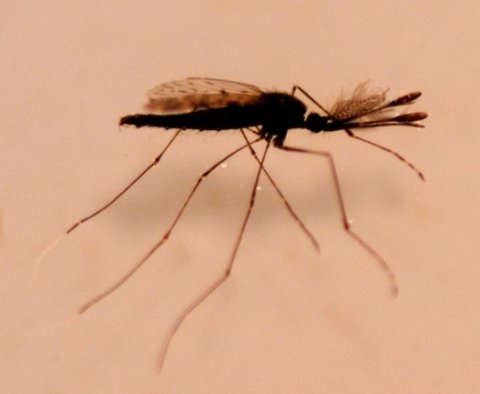The spread of malaria across Venezuela
During the second half of the 20th century, Venezuela became an example of how tropical countries could efficiently fight malaria and reduce the burden the disease represented for their development.
In the context of the first global malaria eradication campaign, a sanitation programme led by Dr Arnoldo Gabaldón, which mainly focused on Indoor Residual Spraying (IRS) with DDT across most of the country, was launched in 1945. This programme reduced malaria mortality rates from 112 deaths per 100,000 inhabitants to just 1 a decade later.
The success was so staggering that by 1961, the World Health Organization (WHO) certified that Venezuela had eradicated the disease from almost 70% of its territory, becoming the first tropical country in the world to reach such an extent and restrict the disease to a few pockets deep in the jungles in the south of the country.
From success to disaster
The current situation couldn’t be more different.
According to the 2018 WHO World Malaria Report, Venezuela reported 411,586 cases of malaria last year, 53% of all cases in the Americas and almost a ten-fold increase compared to 2010. Most experts expect the number this year to surpass a million. Most cases are still heavily focalised in Bolívar state, a sylvatic region where climate, social conditions and an almost absolute lack of public health infrastructure, create a particularly good environment for the disease to thrive. Nonetheless, cases across the country multiply every year, with unofficial information suggesting the disease is present in at least 18 different states.
The situation has worsened as the country has plunged into the worst hyperinflationary crisis seen in the Western Hemisphere. Since the Venezuelan Ministry of Health stopped publishing epidemiological data of any kind almost three years ago, it’s impossible to understand the real magnitude of the problem, not to mention the epidemiological drivers behind it.
The resurgence of malaria in Venezuela, where most of the population has never been in contact with the parasites, is particularly worrisome. Malaria immunity develops after repeated infections with Plasmodium parasites, and even though it is never complete, it helps control the disease more efficiently, reducing the severity of clinical manifestations.
Children are particularly vulnerable
In countries where malaria is endemic, children are continuously exposed to parasites, and by the time those who survive turn five, most will already have developed a strong immune response that will protect them in the future, as long as they remain in the high endemicity areas.
For this reason, the vast majority of malaria deaths in Africa occur in children, while disease in adults is usually milder. In Venezuela, where high endemicity rates are only found in small pockets around the country, severe malaria is becoming increasingly common in all age groups, after the largely immunologically naive population is being exposed to the parasites for the first time.
Lack of anti-malarial drugs
Treating these individuals is a challenge anywhere in the world but is particularly complex in a country where hospitals lack the most basic resources, and anti-malarial drugs are not widely available. Without official information regarding deaths, the World Malaria Report estimates that some 450 people died of malaria in Venezuela during 2017, with the country greatly contributing to the 32% increase in mortality seen in Latin America during the 2010-2017 period.
No active monitoring of mosquito populations, vector control programmes, or mosquito and vector resistance to insecticides/drugs studies have been reported by the Ministry of Health in years. In fact, the WHO’s World Malaria Report indicates that only 5,000 long-lasting insecticide treated nets (LLITN) were distributed by the Venezuelan government in 2017, compared to the 30,000 distributed the year before. Similarly, IRS programmes only benefited 3,900 people, compared to little more than 2,000,000 in 2015.
But beyond massive underinvestment in vector control and monitoring programmes, the main factor driving the Venezuelan epidemic might be the recent increase of illegal mining across Bolívar, one of the states where malaria transmission was never eliminated.
Located in the middle of the Amazon rainforest, these artisanal mines attract people from all over the country, hoping to earn extra income in the middle of a pervasive economic crisis that has destroyed most Venezuelans’ purchasing power.
Mines act as breeding grounds for vectors
The mines, mostly run by criminal gangs and paramilitary groups, are also a perfect feeding site for Anopheles darlingi, the most important vector in the region. Miners are bitten and infected with the disease, and many get sick there. It’s a region where medical attention is nearly non-existent, and those who are sick travel to major settlements only when the disease has advanced considerably.
Those who recover then return to their hometowns carrying the Plasmodium parasites in their blood, taking the disease back to places where years of underinvestment in vector control programmes have allowed the mosquitoes to reappear.
Our recently published paper in the Transactions of the Royal Society of Tropical Medicine & Hygiene shows that many patients admitted during 2017 and 2018 to a hospital in the city of Mérida, over 800 km away from the mines, and where no cases of malaria have been officially reported since 2003, travelled to Bolívar in the previous months, or met someone who had travelled. Tellingly, none of the patients admitted in 2019 had travelled.
This, and the high number of cases of infection with P. falciparum, a parasite that used to be relatively uncommon in the region, suggest that domestic migration to Bolivar may have helped reactivate new malaria foci throughout Mérida’s lowlands. Almost 40% of the studied patients, including children and adults had manifestations of severe malaria.
Further information, especially nationwide official epidemiological data, are urgently needed to fully understand the nature of the epidemic and define the proper way to act against it.
Sign up to our newsletter for more updates
